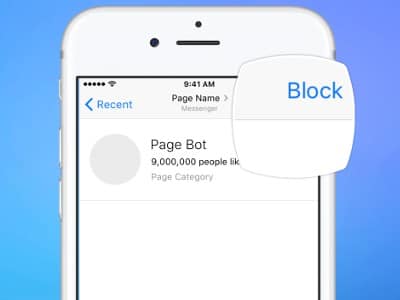Our bots, our selves: Are bots ready for prime time?

 Every once in a while, it pays dividends to look back at recent forecasts just to verify how the bold predictions of the past have actually panned out in reality.
Every once in a while, it pays dividends to look back at recent forecasts just to verify how the bold predictions of the past have actually panned out in reality.
To believe the forecasts relating to apps over the past five years, it appeared certain that apps and the app ecosystem were ready to experience, if not hockey-stick growth, at least a steady uptick as apps grew in popularity.
The first impulse of forecasters, after all, is to study recent growth trends and then just keeping that line moving up and to the right.
Anyone with a memory might remember a very popular, and incredibly wrong, 1999 book titled “Dow 36,000: The New Strategy for Profiting from the Coming Rise in the Stock Market”.
That forecast did not work out. So what are we to believe when it comes to forecasting how people are going to interact with mobile devices over the next number of years.
If the size of the app economy was $53 billion in 2012, forecasters reasoned, then surely by 2016 it will have grown to $143 billion?
Onward and upward! “The numbers don’t lie,” shouted the headlines.
But a funny thing happened on the way to the app store. It turns out that the app pie, instead of just getting bigger and bigger forever, had a limit.
[bctt tweet=”People don’t use most apps more than once or twice after they download them, for the most part…”]
“The easy money is gone,” says a recent Verge profile of the app market, which paints a grim picture demonstrating that the paid app population in Apple’s App Store fell from 63% of apps in 2011 to 27% last year, with the average price for an app plummeting from $3.64 to $1.27 during that same time.
People don’t use most apps more than once or twice after they download them for the most part, and after people have got the apps they need, they quickly lose interest in just browsing the app store for kicks.
The novelty wears off, leaving both developers and forecasters with a Kool-Aid hangover.
And now that apps appear to be drying up as the reliable interface for people negotiating their personal business through a mobile device, we are assured that bots are ready to take their place.
This is the kind of thing that tech entrepreneurs refer to as a “pivot”, which is a nice way of saying that Plan A hasn’t been working so great and it’s now time to haul out Plan B.
And Plan B is entirely dependent on whether you think it makes more sense to interact with a chatbot each time you need a weather forecast or want to order a burrito, as opposed to opening an app or looking at a mobile site or just going outside.
[bctt tweet=”The biggest companies in tech are placing their bets on our bot future” username=”@cantechletter”]
Still, the biggest companies in tech are placing their bets on our bot future.
Earlier this month, at Facebook’s F8 Conference, CEO Mark Zuckerberg announced the implementation of bots on its Messenger platform, while Microsoft unveiled its Bot Framework, which enables developers to create bots that interact with users across various channels, including SMS, Skype or Slack.
A week before the Facebook announcement, Waterloo, Ontario’s Kik Interactive launched its Bot Shop, opening the company’s platform to third-party developers, so that anyone can develop a bot operating on the Kik platform, which has more than 275 million registered users and claims to be used by approximately 40% of U.S. teens.
Last December, Slack introduced its Botkit, developed by Howdy, a framework for Slack app development.
Last month, Dutch airliner KLM became the first passenger airline to offer booking confirmations, boarding passes and flight updates through a chatbot operating on Facebook Messenger.
The main concern when it comes to interacting with bots appears to hinge on how long it takes before the things resemble an accurate cross-section of the internet, which is to say how quickly a bot becomes a homophobic, racist Gamergate troll.
________________________________________________________________________________________________________________
This article is brought to you by Slyce (TSXV:SLC)
Take a picture of a product and Slyce will tell you where you can buy it. Click here to learn more.
________________________________________________________________________________________________________________
Microsoft is still processing the “learnings” generated last month by the launch of its social chatbot, named Tay, who became a foul-mouthed sarcastic Holocaust denier just 24 hours into its short life.
It was easy enough for Microsoft to throw a tarp over Tay and say, “Oops! Sorry about that.” What happens when the army of customer service bots ready to be deployed across every channel of digital interaction suddenly decide to give the people what they actually seem to want?
Best of luck containing that.
Concerns about how bots are likely to develop as they get used to online social life aside, are bots any more likely to take over customer service than they are to be our friends on social media?
While these decisions are driven by cost, there comes a point at which corner cutting provides diminishing returns for companies, forcing them to painstakingly reverse course.
After a couple decades moving call centre operations to the lowest cost jurisdictions, companies recently have been re-shoring their customer service operations and confronting the costs associated with employee churn.
[bctt tweet=”Companies that can use bots to make customer interaction appear to be a natural extension of a single user experience will reap a reward.” username=”@cantechletter”]
It turns out that it costs companies less in the long term to provide customers with halfway knowledgeable representatives who are incentivized to feel some investment in their work by not getting paid the lowest possible wage.
Customers who can sense that a call centre agent has little to no interest in helping them, on the other hand, are more likely to take their business elsewhere and badmouth companies on social media, factors which have driven a wholesale change in the quality and location of call centres and how companies interact with customers in general.
Is any of this likely to be helped by the widespread implementation of bots?
What has become clear over the past couple of years is that companies who are willing to invest in improving the customer experience are going to come out winners in the digital economy.
Companies that can use bots to make customer interaction appear to be a natural extension of a single user experience will reap a reward.
And companies who end up with the customer assistance equivalent of Tay are going to become punchlines.
Bots are no more likely to “kill” apps than apps were able to “kill” websites, or social media was able to “kill” blogs, or Slack is likely to “kill” email.
A more likely scenario is that all of these options will remain very much alive, and that we’re headed for a both/and world in which whatever people are comfortable using is going to end up as the winning solution.
Just take the forecasts projecting the imminent size of the bot market with a grain of salt.

Terry Dawes
Writer

